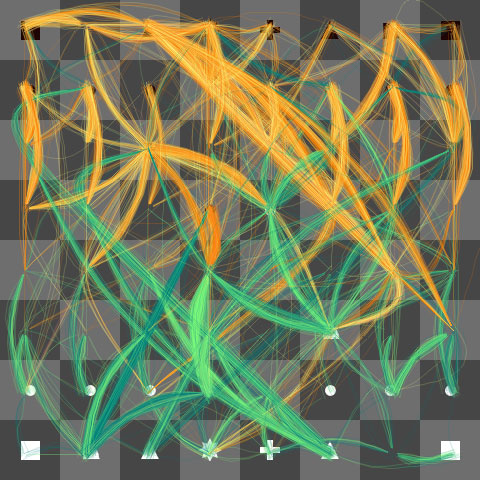
Thinking Machine 4 created by Martin Wattenberg, with Marek Walczak, using Processing, explores the invisible, elusive nature of thought. Play chess against a transparent intelligence, its evolving thought process visible on the board before you.
The artwork is an artificial intelligence program, ready to play chess with the viewer. If the viewer confronts the program, the computer's thought process is sketched on screen as it plays. A map is created from the traces of literally thousands of possible futures as the program tries to decide its best move. Those traces become a key to the invisible lines of force in the game as well as a window into the spirit of a thinking machine.
When it is your (White's) turn to move, the chess board will gently pulse to show the influence of the various pieces. in the left image below, you can see waves over the squares around the king and (very lightly) over the squares where the pawns might capture. When the machine (Black) is thinking, a network of curves is overlaid on the board; see image at right. The curves show potential moves--often several turns in the future--considered by the computer. Orange curves are moves by black; green curves are ones by white. The brighter curves are thought by the program to be better for white.





